What Is Dearmouring? The Process of Releasing Stored Trauma & Tension

Table of Contents
Dearmouring is a hands-on, somatic method for releasing built-up tension in the body, especially in the fascia, pelvic floor, and nervous system, helping to release stuck energy. It works with the physical patterns the body has developed in response to stress, trauma, or chronic override.
These patterns show up as tightness, numbness, pain, or shutdown, most often in the pelvis. When armored, you might experience vaginal dryness, discomfort with penetration and arousal that feels distant because the body has learned to guard itself.
Dearmouring helps unwind that through deep, sustained pressure, breath, and time, and it gives the body a way to stop holding what it never had space to process in the healing process.
The Body Armors to Protect Us - But Then Forgets How to Unlock Itself
“Character armor” is a term developed by Wilhelm Reich, an early student of Freud who broke from traditional psychoanalysis to study how emotional experiences are stored in the body. Reich observed that the same protective strategies people used psychologically were also being expressed physically through shallow breathing, clenched jaws, tightened shoulders, or chronic pelvic tension.
The physical body plays a crucial role in holding onto emotional experiences, manifesting defenses and resistances that can lead to blockages, chronic tensions and numbness, obstructing emotional expression.
He found that these were survival responses, hardwired into the body to manage distress. And when the original source of the distress wasn’t processed or completed, the body held on.
Character armor is essentially a full-body imprint of everything you’ve had to suppress to survive. Dearmouring practices focus on trauma release, helping to let go of stored trauma and promoting healing throughout the body, ultimately leading to more pleasure .
Why This Armor Becomes Chronic
The autonomic nervous system, which controls fight, flight, freeze, and fawn responses, doesn’t operate through logic. It responds to perceived threat. When the nervous system detects danger, it immediately reroutes blood flow away from the digestive and reproductive systems and toward the muscles needed to run or fight. Your breath shorten, muscles tighten, and when fighting or fleeing aren’t options, the body shifts into freeze, which is dissociating and bracing.
In a culture where women are expected to override their instincts constantly, to be polite, accommodating, sexually available, emotionally contained, these nervous system states are triggered repeatedly, and rarely completed.
What Happens During a Body Dearmouring Process?

Dearmouring begins with contact with the parts of the body that have been working overtime to hold it together. The process doesn’t target your “energy” or try to crack you open with force. It works with the structure of the fascia, nervous system, and breath to meet long-held contractions that haven’t had a safe way to resolve.
These contractions are shaped by years of lived experiences. The jaw holds the pressure of politeness. The sternum and upper chest are where shutdown happens after chronic disappointment or emotional self-containment, especially for women who’ve learned to be “the strong one.” The solar plexus, sitting just beneath the ribs, often holds the tension of staying in control: tight belly, shallow breath, vigilance. And the pelvis, where a woman's boundaries have most often been ignored, misunderstood, or overridden develops a deep, unconscious clench.
In a session, you apply steady, skilled pressure to areas across the body. Pressure is held, not massaged or rubbed so the body has time to respond.
The Role of Breath & Vocalization
In dearmouring, energy work is combined with breath work as a regulation tool to help release emotional and energetic traumas from the body, building capacity in the nervous system. When the practitioner is applying pressure to an area, deep, consistent breath removes the body from a state of constant bracing. You’re not being rushed. You can stay with this.
Sound follows breath as a neurological bridge. The throat and the pelvis are connected through the myofascial system and through the social nervous system pathways of the vagus nerve. In a session, sound is encouraged because it reopens that pathway. Moaning, sighing, humming, and crying reestablish flow between two areas that shut down together and tells the system it no longer needs to censor itself to stay safe.
Vaginal Dearmouring: Meeting the Untouched Places Inside the Body
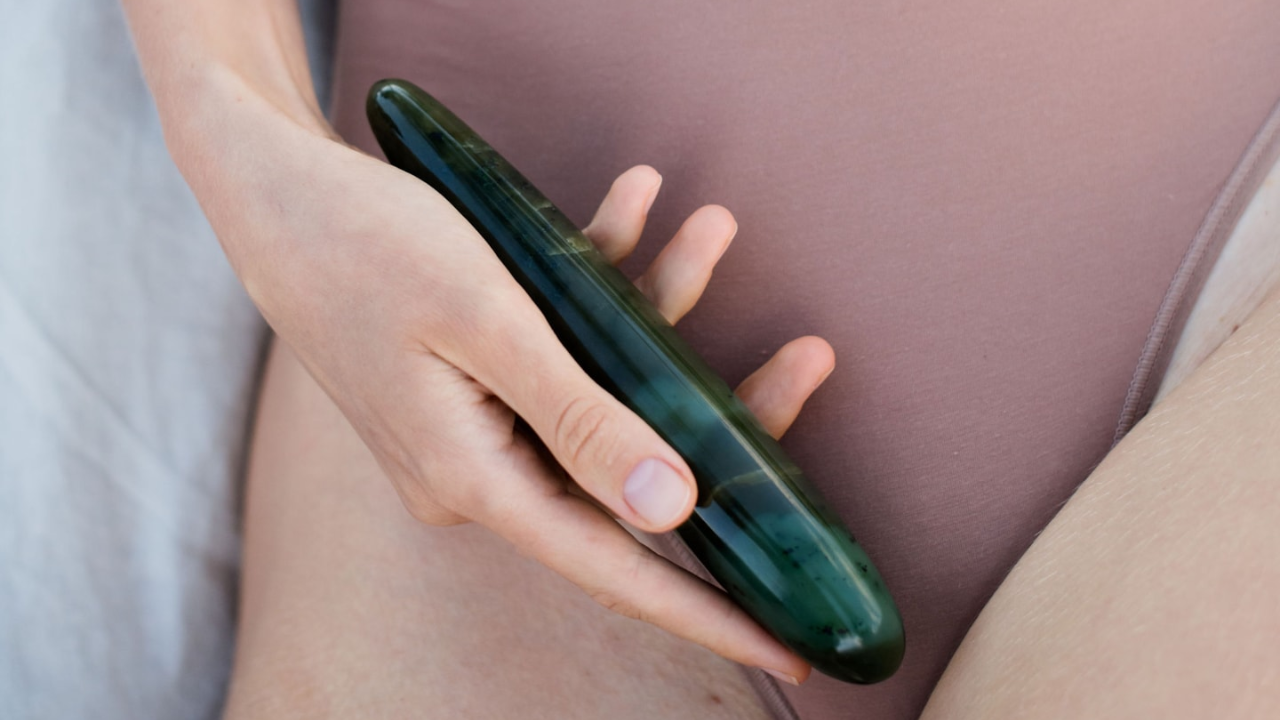
The vaginal canal is a living, responsive structure composed of fascia, muscle, nerve endings, and soft tissue, all directly shaped by the autonomic nervous system. This means it doesn't just respond to arousal and pleasure, it also responds to fear, pressure, memory, and past experience.
When we talk about the vagina “storing” emotion, wee’re describing what happens when the body absorbs impact, physical or emotional, and doesn’t have the space or support to integrate it.
The pelvic floor contracts to protect us, the walls of the vagina brace, and if touch, penetration, or even medical procedures happen in that state of tension, the experience can register as painful violation, even if it was wanted or even if it was with someone we trusted. When the body doesn’t feel safe, it doesn’t differentiate between a stranger and a partner. It just contracts.
Common Areas of Armoring
The vaginal canal has different points that respond in various ways depending on your history.
The anterior wall, home to the G-spot, often holds the imprint of over-giving and unmet needs. Women who have spent years performing pleasure for others may find this area feels tense, sore, or difficult to access emotionally.
The cervix is another deeply charged zone and it often stores unresolved emotion tied to abandonment, betrayal, and loss. For many women, this includes birth trauma, deep disappointment, or the sense of never being fully met, sexually or emotionally. Some describe the cervix as feeling completely numb. Others feel grief surface the moment it’s touched.
The posterior wall, toward the back of the vaginal canal, tends to hold fear. This is where the body tries to hide. Women with histories of shame, secrecy, or dissociation often report a flinch or retreat in this area.
Self-Dearmouring with Crystal Pleasure Wands
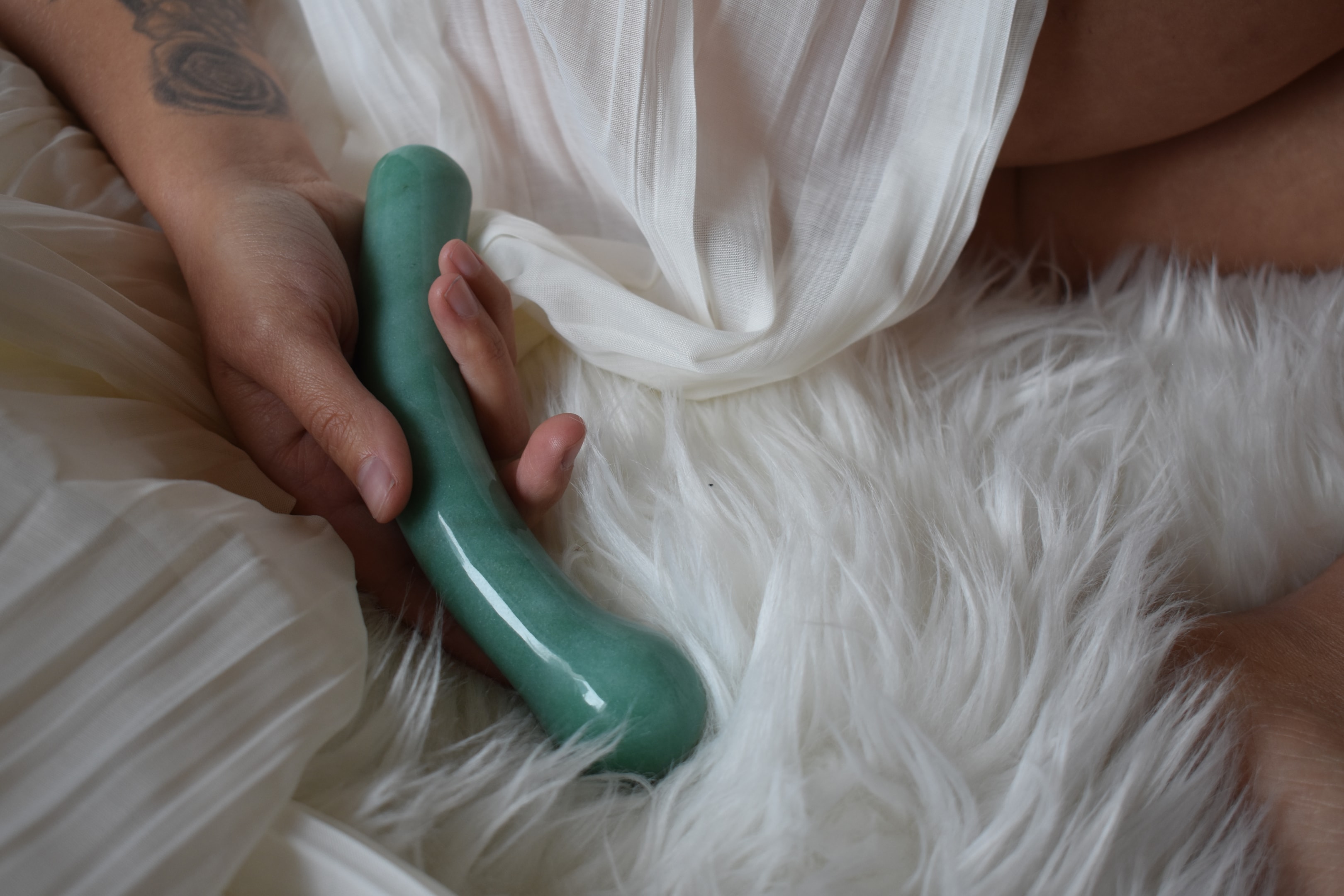
Crystal wands are one of the most effective tools for body de armouring because they meet the physical and structural needs of the practice which is steady pressure, precision, and the ability to reach areas of internal tension without creating more strain or stimulation.
When working with stored tension in the vaginal canal, the goal isn’t movement or sensation, it’s sustained contact. To access the armored up internal areas, the body needs to be touched in a way that is consistent and neutral, not fast, not triggering, and not demanding a response, allowing for effective space holding.
The purpose of that pressure is to give the tissue time to respond. Fascia, the connective tissue inside the body, doesn’t release through friction. It responds to slow, unchanging contact. When you hold a wand against an area of internal tightness or dullness and stay there, the body has a chance to adjust and you might notice a change in temperature, a subtle release, or just a clearer sense of that area coming into awareness.
How to Have a Self-Dearmouring Practice

You need a quiet space, privacy, time that isn’t borrowed from something else, and a body you’re willing to meet. Start by setting up a space that tells your nervous system it doesn’t have to be on. Try closing the door, turning off your phone, and making the space physically warm and emotionally off-duty. If your system senses interruption, cold, or chaos, it won’t soften. Your job is to eliminate those signals.
Once you’re in the space, pause. Ask yourself where in your body you feel least available. It could be your belly, your inner thighs, the pelvic floor, or internally, the entrance to your vagina, the side walls, the G-spot, or cervix. Choose one place as this practice is about going deep with what’s here. D
Begin with your breath. Let your hand rest over the area you’ve chosen. Feel the surface before trying to change it. What does it feel like to make contact there? Is your breath staying low and steady? Are you tensing anywhere? Is there resistance, dullness, impatience? Those are cues that let you know what’s active before you do anything.
If you’re working externally, start with still touch. Press gently into the area. Hold the pressure for a few minutes without moving. Stay long enough that your system to soften. If you’re working internally with a wand, move slowly. Apply lube, and pause with each shift in depth or direction. Notice what happens when the wand rests in one place.
At some point, you’ll feel a shift. Not a dramatic one, usually, but more a sense of space, fatigue, completion, or even boredom. When that arrives, don’t push past it. If you used a wand, remove it with care. Rest your hands on your belly or heart and lie still for a few more minutes.
After the session, drink water and eat something grounding. Avoid screens or jumping back into tasks.
Conclusion
Disconnection doesn’t happen all at once. It builds slowly, through years of pushing through discomfort, overriding needs, and adapting to pressure that never lets up.
Dearmouring works slowly, through contact and presence, to invite those holding patterns to change. In that space, the body starts to soften.
Over time, this kind of work changes how you relate to your body. You start to notice where you check out, where you perform, where you feel genuine contact. And from there, you have more choice because your body finally had space to recalibrate on its own terms.
FAQ
De-armouring refers to the somatic process of releasing stored trauma, tension, and pain from the body through sustained physical pressure and breath work. This method targets the pain body and unconscious holding patterns, especially in the pelvic region, helping energy and emotions begin flowing freely again. The body remembers what it had to store, and de-armouring gives it a chance to let go on a cellular level.
Tantric dearmouring is a trauma-informed practice rooted in sacred sexuality that uses conscious touch, breath work, and presence to release blockages held in erogenous zones. It’s a holistic approach that blends shadow work with self-pleasure, helping the body release stuck emotions and reconnect to pleasure. Tantric dearmouring often includes work with crystal wands and focuses on restoring safety, sensation, and choice in the body.
In massage and body de-armouring sessions, “armoring” describes the layers of chronic muscle tension, emotional guarding, and protective holding patterns stored in the fascia and nervous system. These trigger points often form in response to trauma, and over time become part of how the body protects itself. Armoring can manifest as pain, numbness, or shutdown. Releasing this armor restores access to sensation and the heart space.
Dearmouring works with specific pressure points, internally and externally, where the body holds unresolved trauma or emotional pain. These include different points inside the vaginal canal like the G-spot, cervix, and posterior wall, each storing distinct emotional imprints. Externally, the jaw, sternum, solar plexus, and pelvic floor are common areas of tension. A de armouring session applies steady pressure to these points until the body signals release.
Related Articles





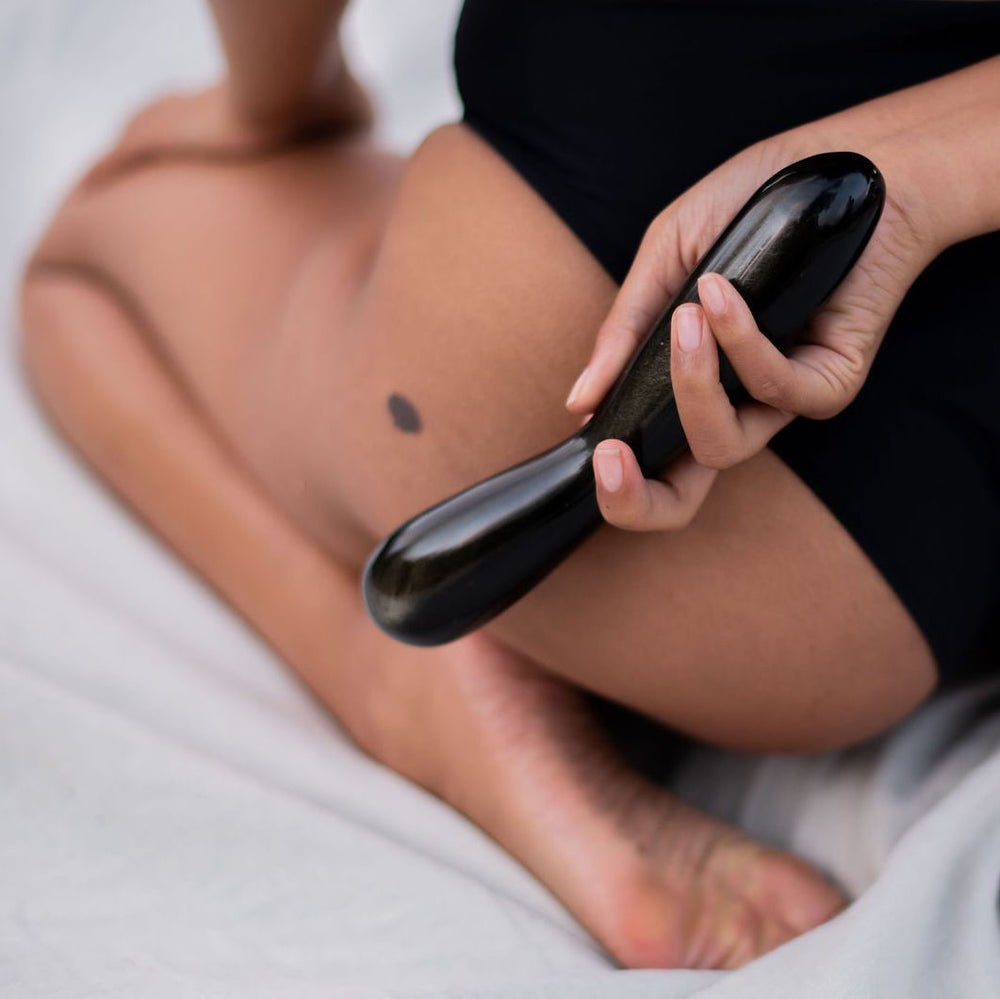


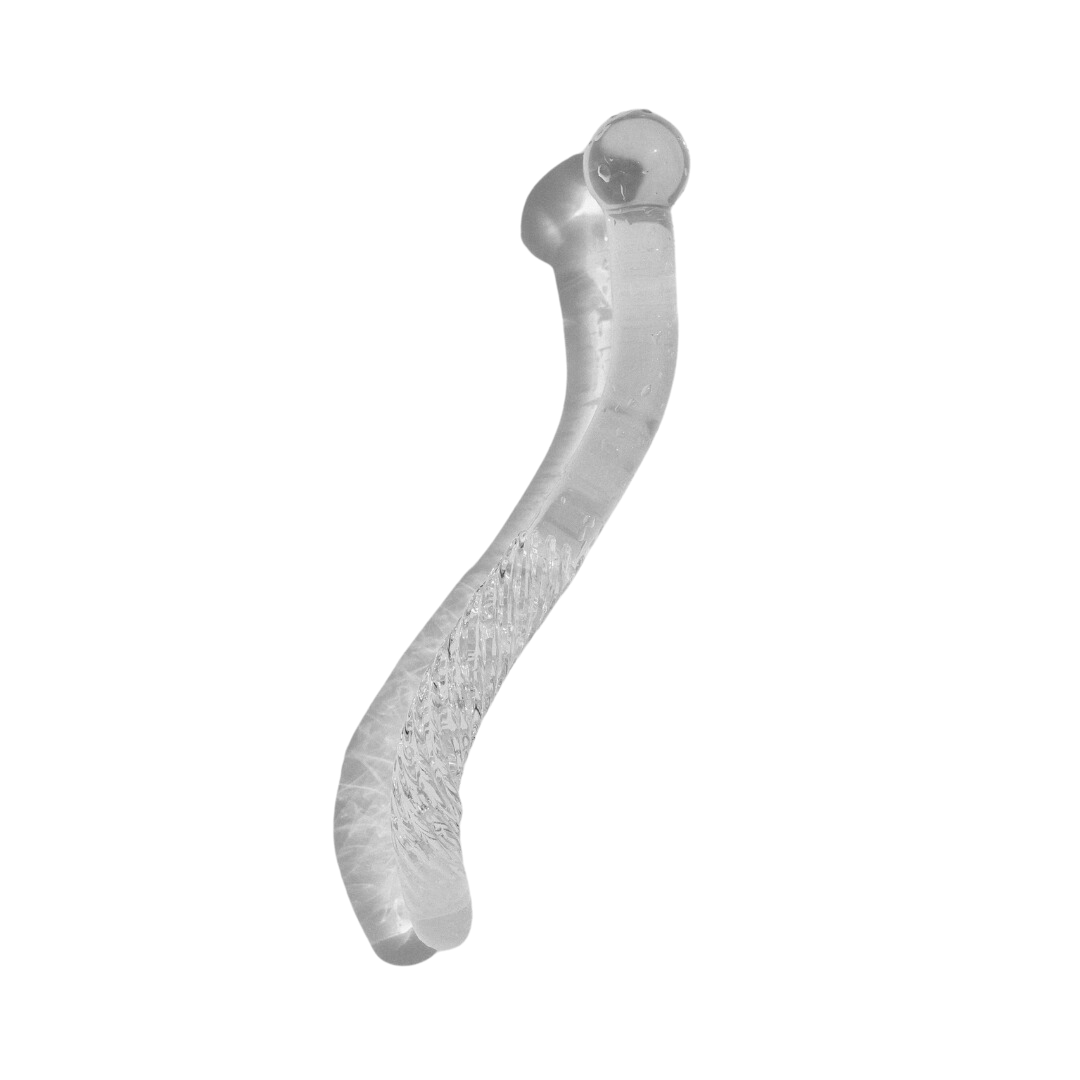




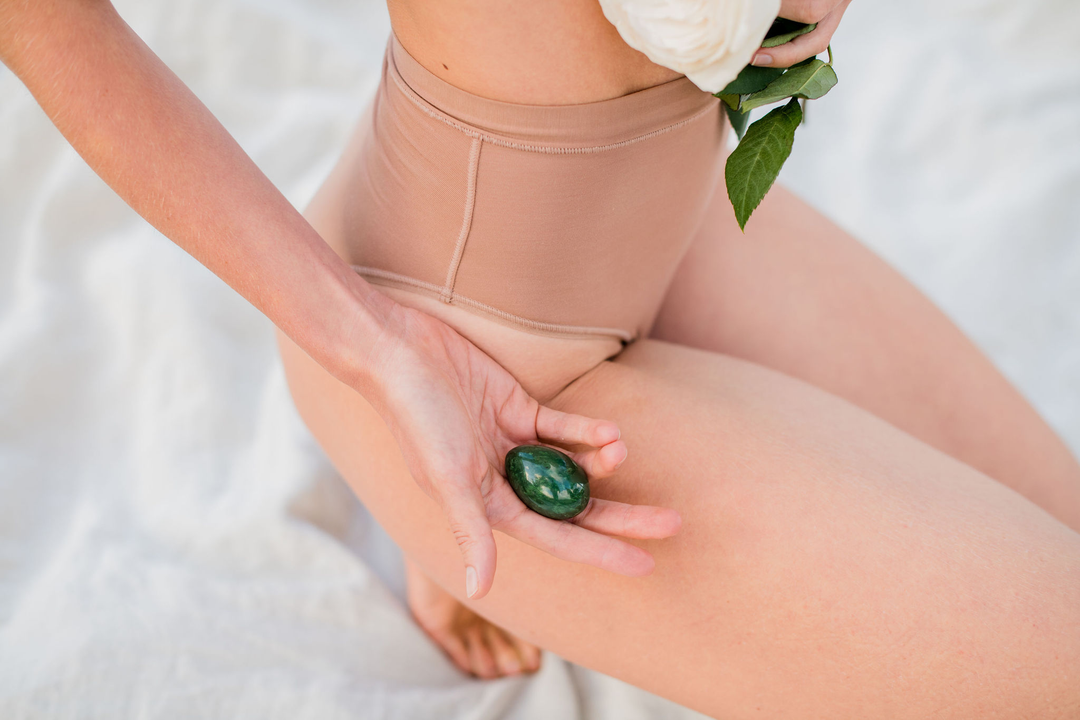
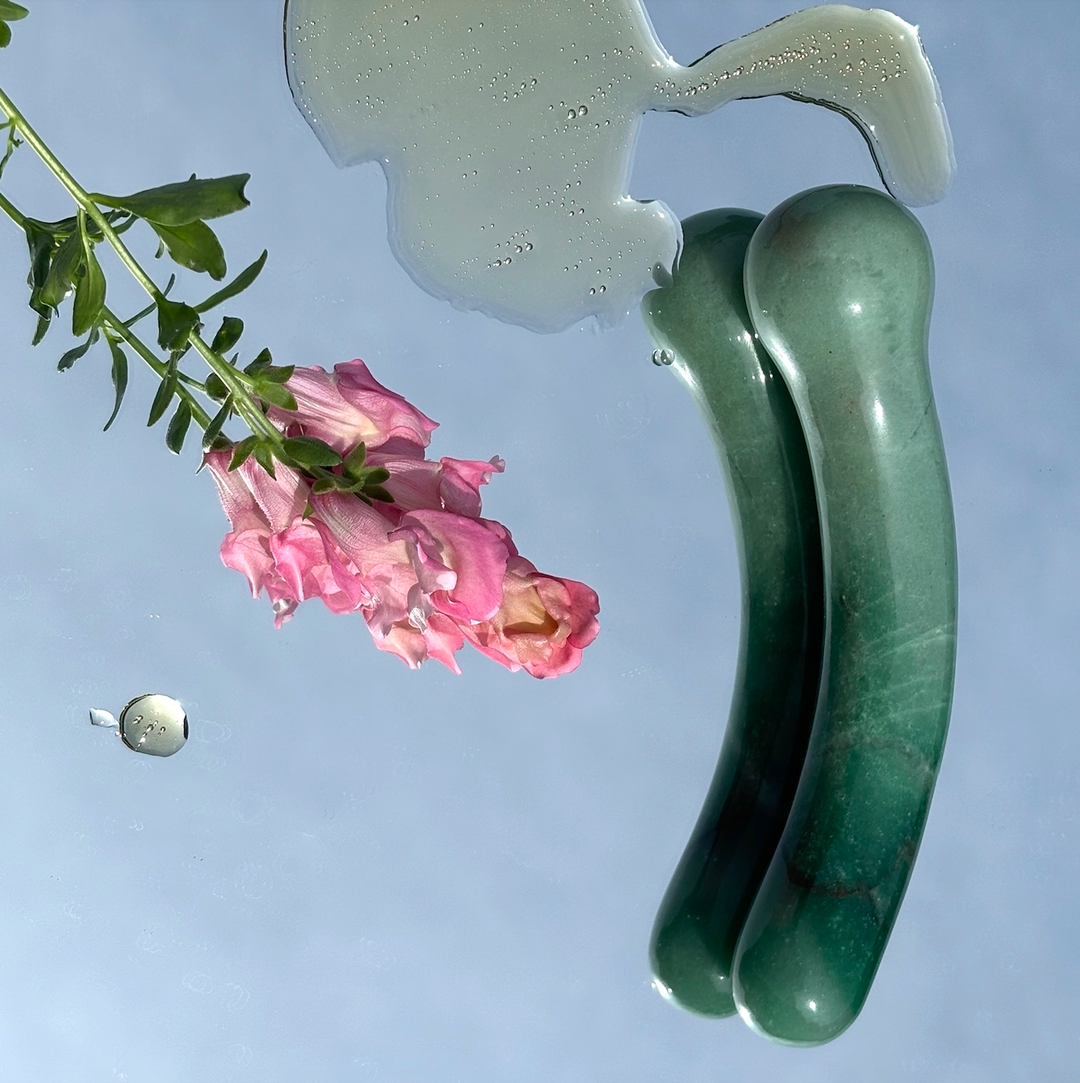
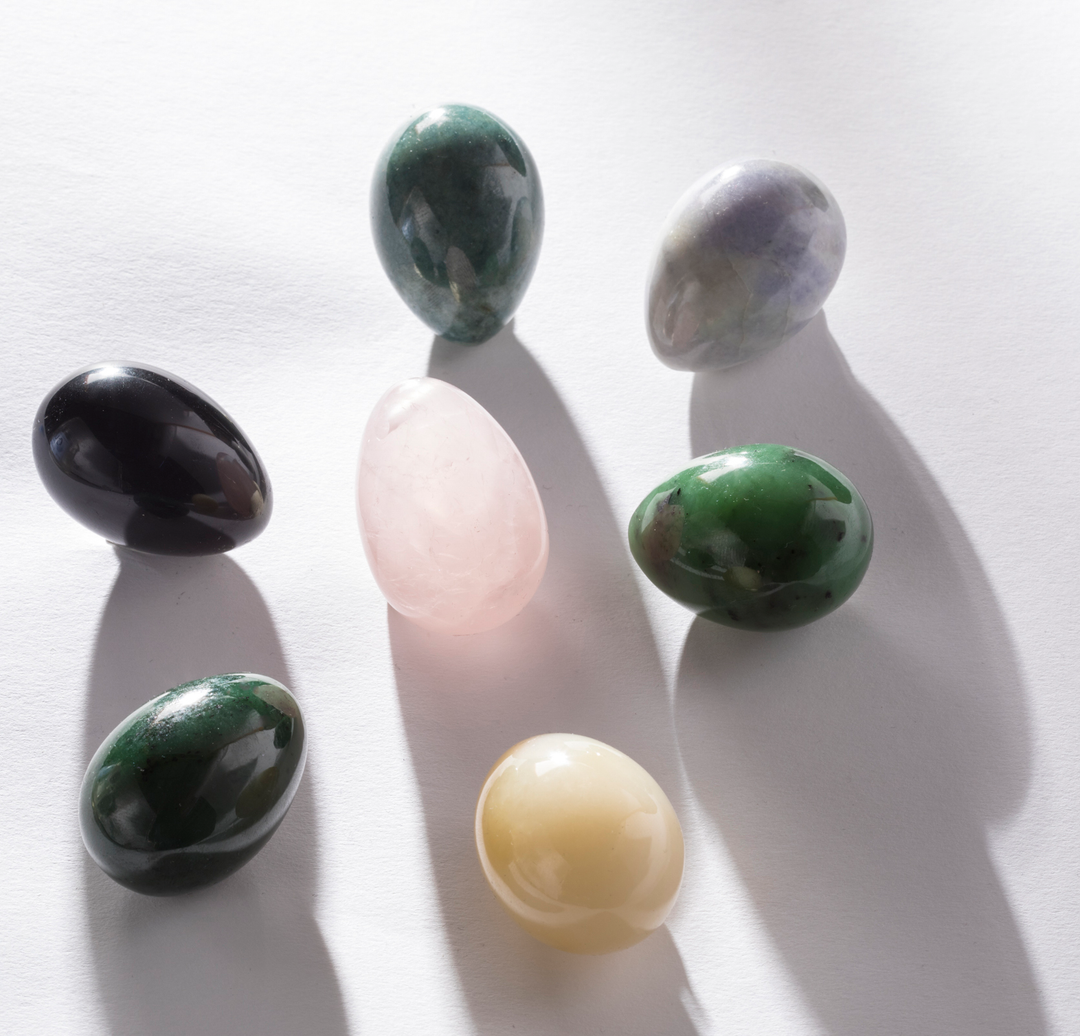
Leave a comment